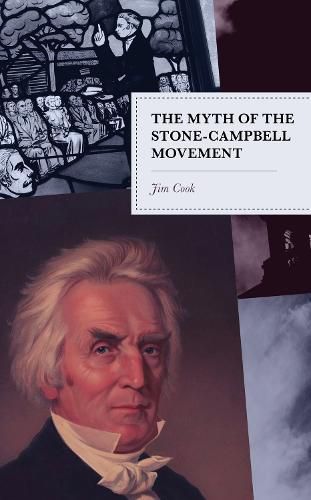Readings Newsletter
Become a Readings Member to make your shopping experience even easier.
Sign in or sign up for free!
You’re not far away from qualifying for FREE standard shipping within Australia
You’ve qualified for FREE standard shipping within Australia
The cart is loading…






The Stone-Campbell Movement was created in 1832 when Barton Stone’s Christ-ians from the West merged with Alexander Campbell’s Reforming Baptists. By the beginning of the Civil War it was the sixth largest religious movement in the United States, and in the twentieth century the movement split into the three main branches that exist today. In recent years, scholars from these branches have worked to better understand their nineteenth-century roots, creating the historical sub-field restoration history in which historians and other scholars debate the influence of Stone and Campbell on specific characteristics of the existing branches.
Bringing new insight into that debate, Jim Cook uses the writings of both Stone and Campbell to show that Stone was not a viable leader of the movement after 1832 and that his ideas were not part of what influenced the twentieth-century branches of the movement. This study demonstrates that the debates going on between restoration historians are thus predicated on the false assumption that Stone influenced people within his movements and proves that Stone was an outsider in the movement that bears his name.
$9.00 standard shipping within Australia
FREE standard shipping within Australia for orders over $100.00
Express & International shipping calculated at checkout
The Stone-Campbell Movement was created in 1832 when Barton Stone’s Christ-ians from the West merged with Alexander Campbell’s Reforming Baptists. By the beginning of the Civil War it was the sixth largest religious movement in the United States, and in the twentieth century the movement split into the three main branches that exist today. In recent years, scholars from these branches have worked to better understand their nineteenth-century roots, creating the historical sub-field restoration history in which historians and other scholars debate the influence of Stone and Campbell on specific characteristics of the existing branches.
Bringing new insight into that debate, Jim Cook uses the writings of both Stone and Campbell to show that Stone was not a viable leader of the movement after 1832 and that his ideas were not part of what influenced the twentieth-century branches of the movement. This study demonstrates that the debates going on between restoration historians are thus predicated on the false assumption that Stone influenced people within his movements and proves that Stone was an outsider in the movement that bears his name.